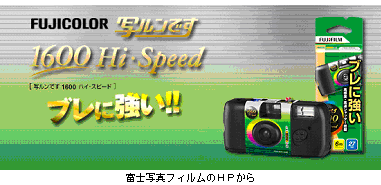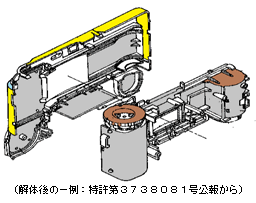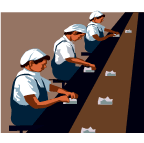Summary of Quick Snap Case in JapanWhat If Single-Use Product Is Reused After Having Been Depleted ?
Doctrine Of Patent Exhaustion
It is obvious that a patented product purchased legitimately from a patentee is not subjected to enforcement of a patent right after purchase.
In some cafe shops, a relay broadcast program of a baseball game is often watched on TV. If a manufacturer enforces a patent right to a TV receiver purchased properly from a distributor by making requests such as “Stop putting it on display as business use” or “Pay a license fee in addition,” such enforcement of the patent right, by which the manufacturer is allowed to obtain a double reward, would cause trouble.
For this reason, it is construed that a patent right over a patented product is exhausted by a legitimate sale of the patented product from a manufacturer as a legitimate patentee, which is known as the “Doctrine of Patent Exhaustion.”

Upon Reaching End Of Life
When degrading in image, the TV is ordinarily disposed of by a user. It is not worthwhile thinking that the TV is excavated from a waste-treatment site to be determined as to whether the patent right is exhausted or not.
There was a case, however, that a patent right was not exhausted in wastes, and therefore, injunctive relief (“Don’t reuse wastes!”) along with monetary relief (“Pay damages!”) were requested against the reuse of wastes. This is the Quick Snap case.

Background Of Case
A subject at issue is a film equipped with a lens, the so-called “disposable camera.” Fuji Photo Film owned a patent right to protect the product. Such a type of camera, after having completed the taking of photographs, is carried by a user to a photo-developing shop. In a photo laboratory, the camera is disassembled so that the film is demounted therefrom and developed to be sent back.

The wreckage of a body left after having been disassembled is not a product but wastes because it is no longer reusable.
There was a company that: purchased the wreckage of the body so as to remount a film therein without disposal of such wreckage of the body as wastes; remounted a cover on the body mounted with the film; and sold a resultant product given a nickname such as “Mr. Tollow.” The amount of sales reached 600 million yen in 5 years. Fuji Photo Film filed a patent infringement lawsuit to seek damages of 240 million yen. The patent claim was recited, in part, as follows:
| A film unit with a lens configured such that said unit is not reusable after a film is demounted therefrom |
Counterarguments Of Defendant
K & J company made counterarguments, as the defendant, in the followings:
As you may be aware, under the “Doctrine of Patent Exhaustion,” when the Quick Snap was transferred from the legitimate patentee to the user, the relevant patent right should have been exhausted. In spite of the presumption that our product would fall within a scope of the patent right of Fuji Photo Film, the reuse of the patent-exhausted product should not constitute an infringement upon such a patent right.

Opinion Of Tokyo District Court
As a consequence, the defendant was defeated. The court held that the defendant should pay 41 million yen for damages. A source of the wreckage was a camera purchased legitimately by a user, and the wreckage was left as a result of disposing of the camera having fulfilled its purpose. Why was Fuji Photo Film allowed to seek damages in spite of the reuse of wreckage?

The court’s holding was that, when a lid of the Quick Snap was broken to be open and the film was demounted in the photo laboratory, the function of the Quick Snap was depleted under normal social conventions, where the status of “the function of…was depleted” is equivalent to the status of the Quick Snap purchased by the user not existing when separated from the film. The doctrine of exhaustion holds as long as the purchased camera could have the function of taking of the photographs, that is, the camera could maintain the identity of the original one; however, the wreckage left as a result of demounting the film from the camera could no longer serve as a camera.
It was concluded, therefore, that the accused product lies outside the scope of the “Doctrine of Patent Exhaustion,” which doctrine is based upon the premise that the product in circulation maintains the function.
As described above, the patent of Fuji Photo Film encompasses “a film unit (equipped) with a lens,” and therefore, even the wreckage of the unit without any film falls within the scope of this patent irrespective of whether the film is remounted or not in the unit.
As to the obtainment of a double reward with respect to the patent right, the court held that, even if the relevant patent right is determined as having the effects on the patented product (wreckage of Quick Snap) whose function as a camera has already been depleted, the patentee would be regarded as not obtaining a double reward because such a product is a new Quick Snap.
The above case would not frequently occur, but great care should be exercised in applying the “Doctrine of Patent Exhaustion.”

If you have any questions concerning the above, please feel free to contact us by sending email to inter@ypat.gr.jp.
